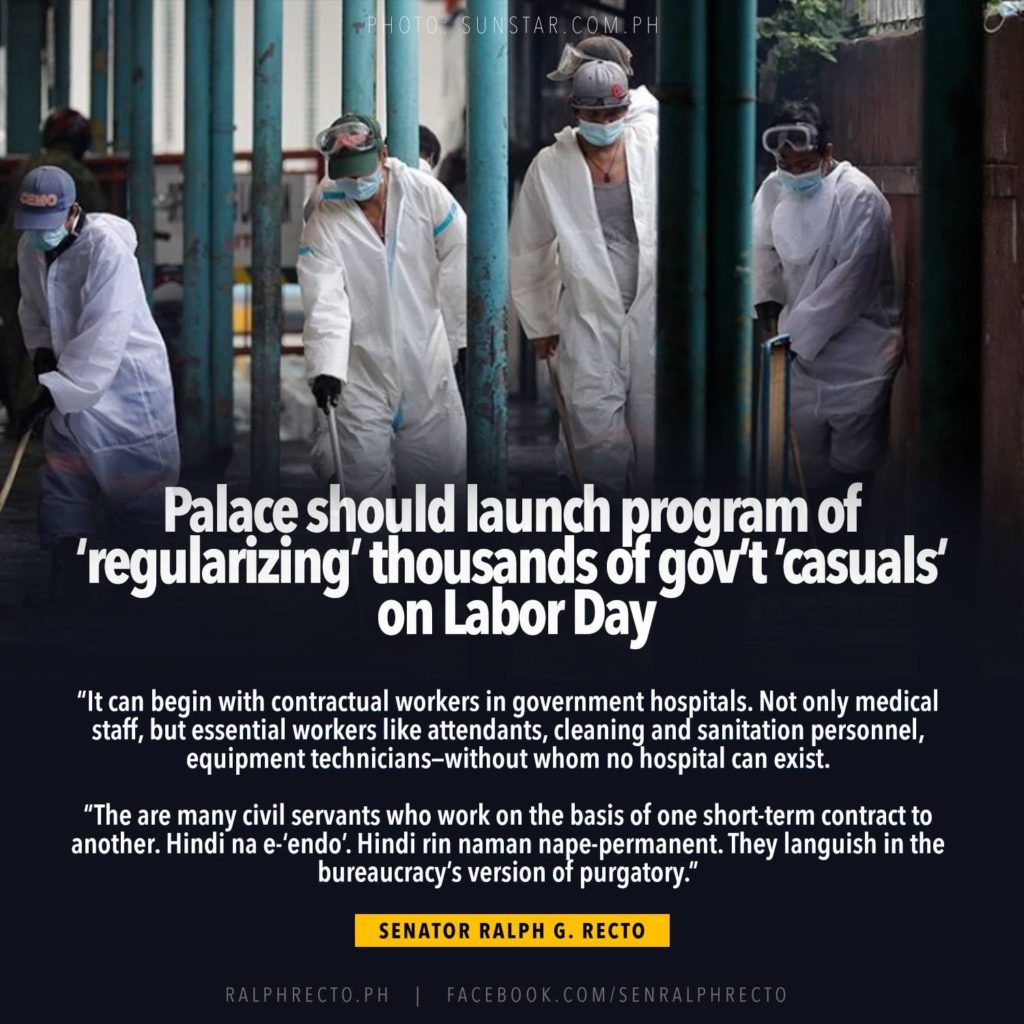Palace should launch program of ‘regularizing’ thousands of gov’t ‘casuals’ on Labor Day
The national government – the country’s biggest employer – should celebrate Labor Day with a mass regularization of casual workers who have been in its employ for years, if not decades, Senate President Pro Tempore Ralph Recto said.
“It can begin with contractual workers in government hospitals. Not only medical staff, but essential workers like attendants, cleaning and sanitation personnel, equipment technicians—without whom no hospital can exist,” Recto said.
“The are many civil servants who work on the basis of one short-term contract to another. Hindi na e-endo. Hindi rin naman nape-permanent. They languish in the bureaucracy’s version of purgatory,” Recto said.

It is high time for government to “open a pathway” to regular employment for the thousands of casuals who may be eligible for jobs which carry security of tenure, Recto said.
“Let us begin with the most deserving. It should be a regularization based on merit,” he said.
To get the ball rolling, Recto said the President can issue a policy announcement on May 1. “Siguro kahit promise lang mula sa Pangulo para masimulan ang proseso, malaking hakbang na.”
Recto said such a presidential directive would trigger “a census of temporary workers in the public sector who are hired under such schemes like “job order”, “emergency hiring”, ”Memorandum of Agreement”, or “Contract of Service”.
Government had 600,000 contractual employees as of August 2020, the Civil Service Commission (CSC) disclosed during the House hearings on the 2021 national budget last year.
A 2018 study of the Department of Labor and Employment also arrived at the same count.
This is a five-fold increase from the 120,000 the CSC had reported in 2010, Recto said.
“At 600,000, the ‘contractuals’ are bigger than the Army, and second in size to the almost million-man DepEd workforce,” he said.
Recto said the ballooning of temporary hires “distorts and hides” actual government spending for personnel services.
This is so because salaries of casuals are charged to “Maintenance and Other Operating Expenses” and not on “Personnel Services”, under which all compensation related expenses are booked, Recto explained.
Also not reckoned as direct labor expense is the cost of hiring workers in subcontracted tasks like security and janitorial services, Recto added. “The fact is, government is one of the biggest buyers of outsourced labor in the country today.”
Government, however, saves money under these arrangements as they do not pay for the pension contributions of what are essentially private workers.

